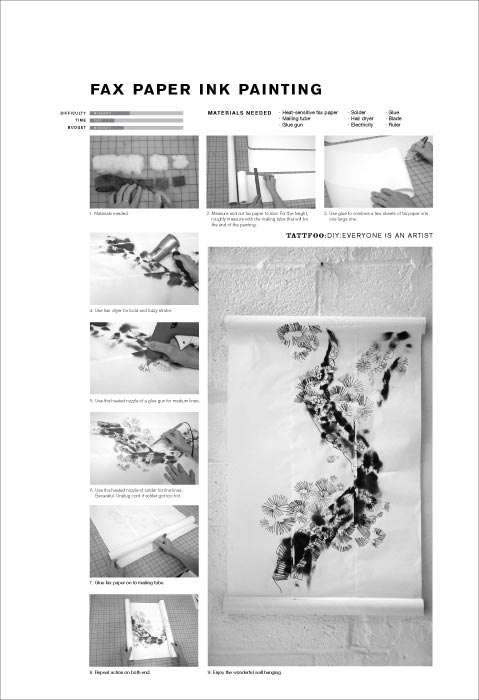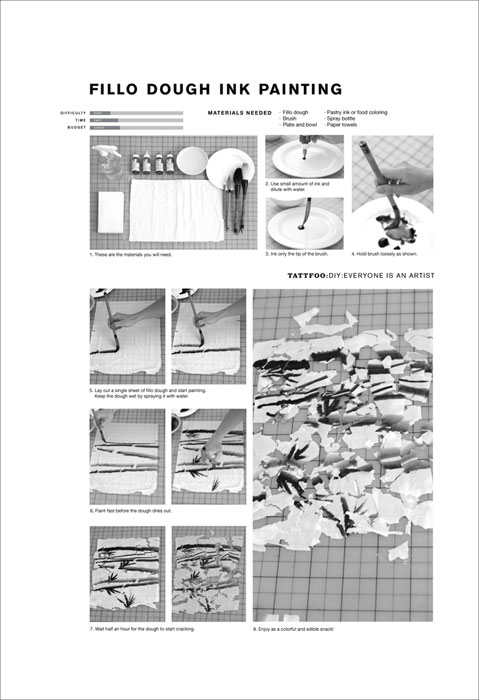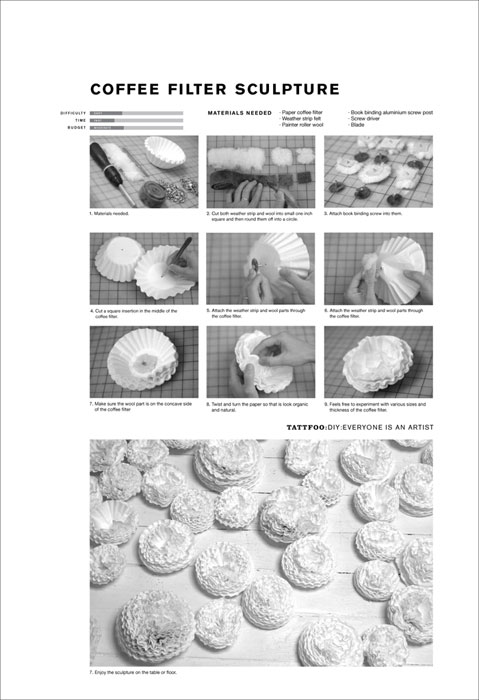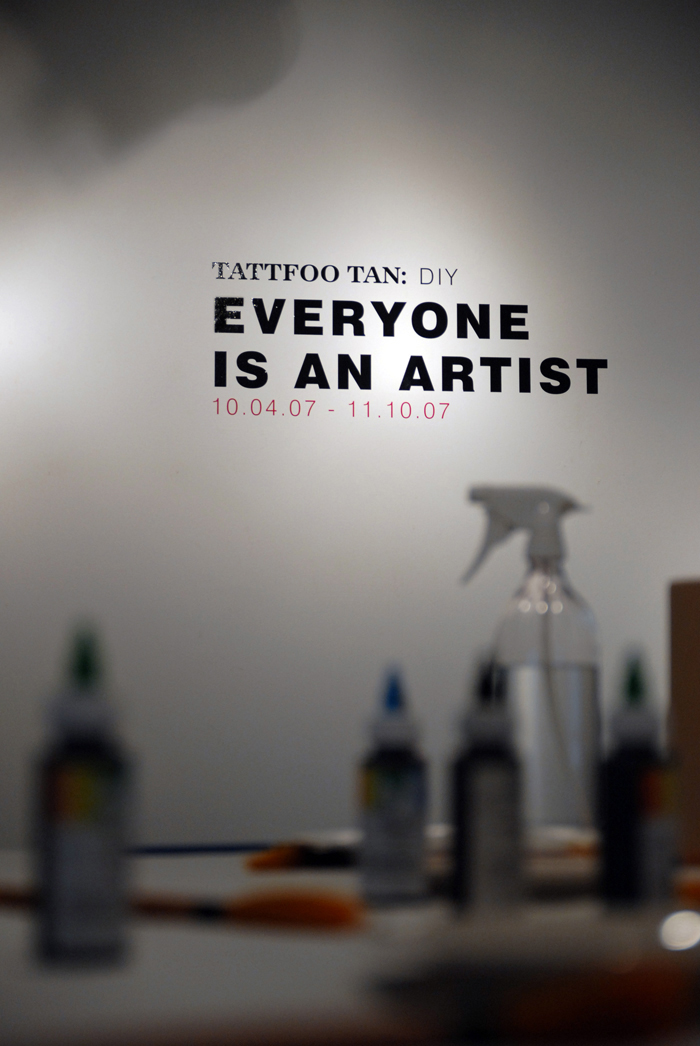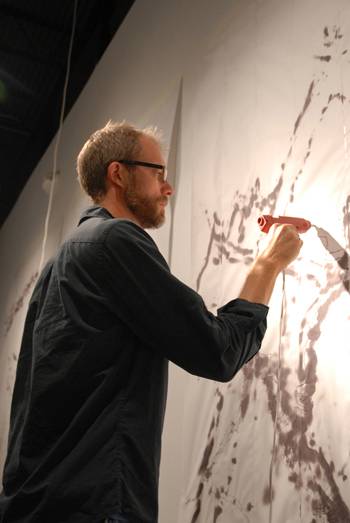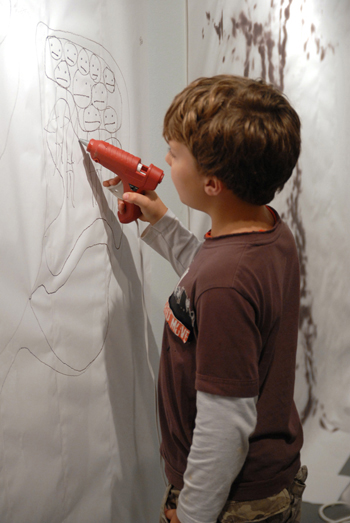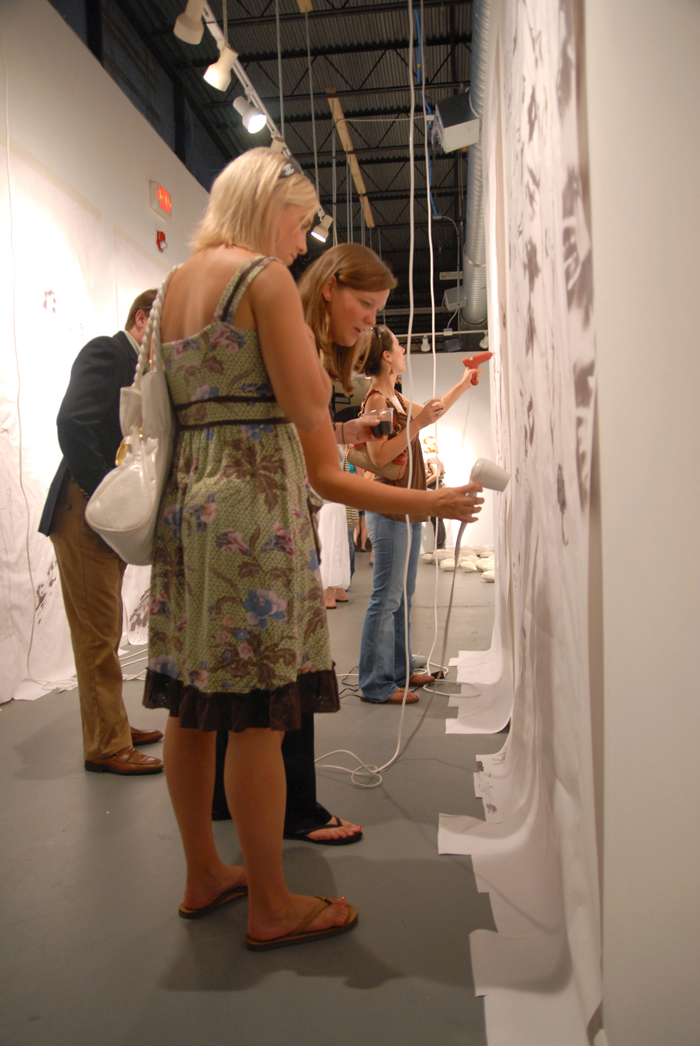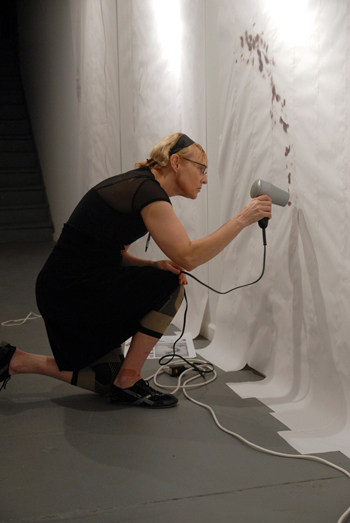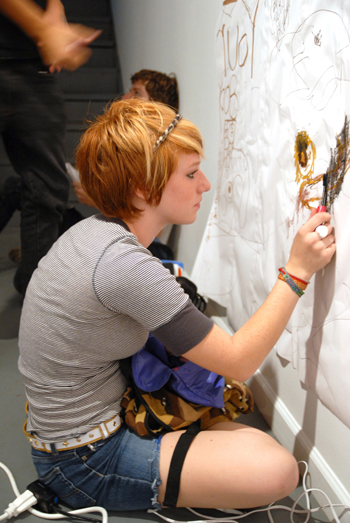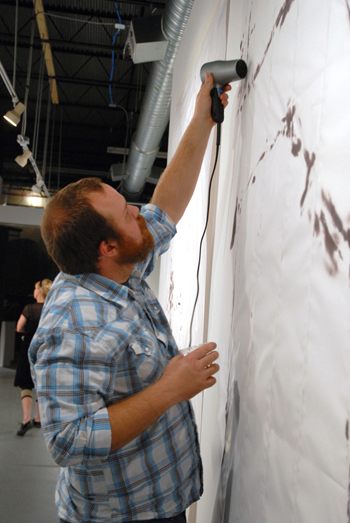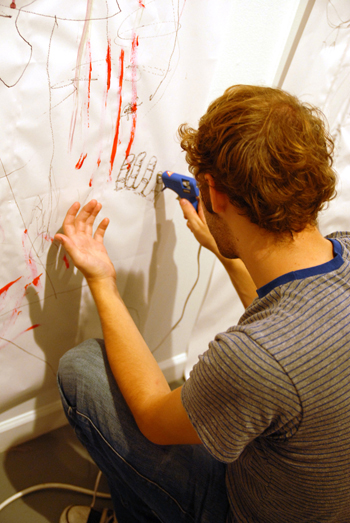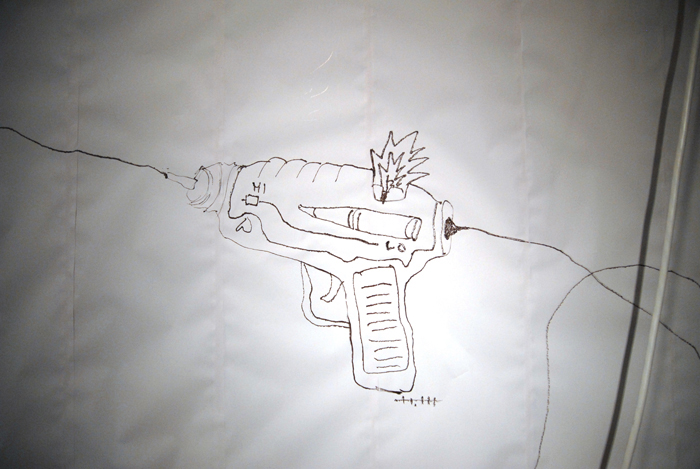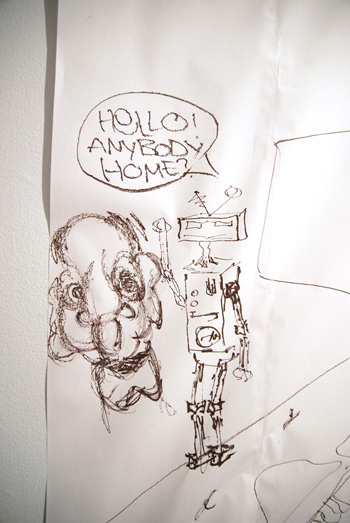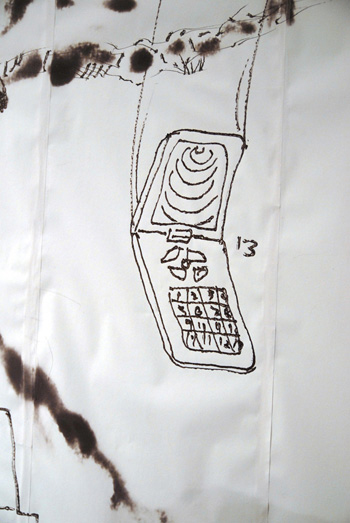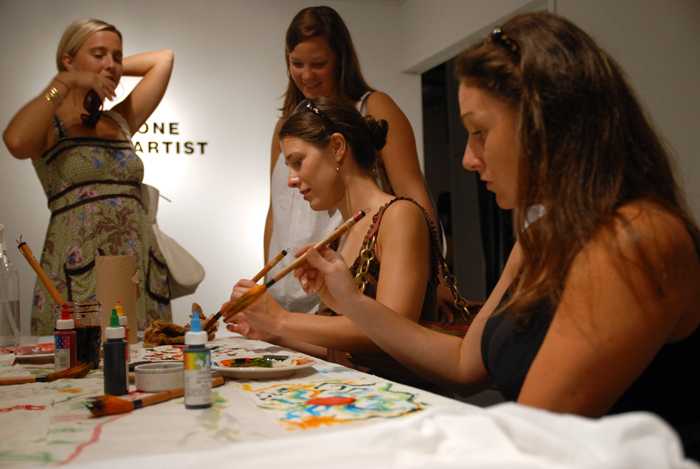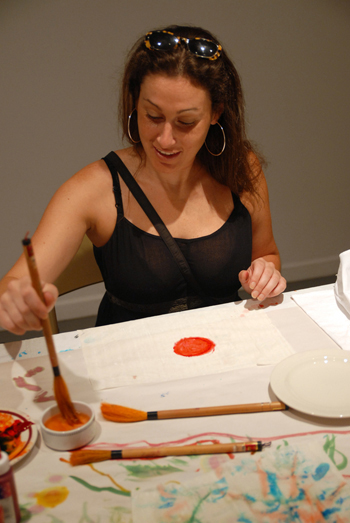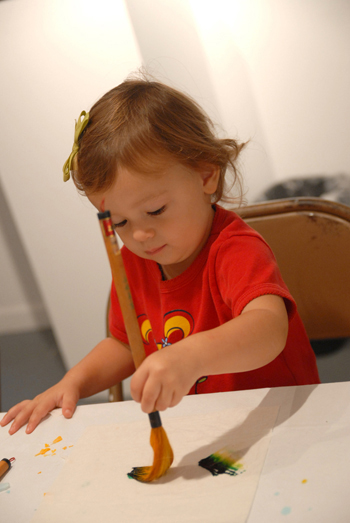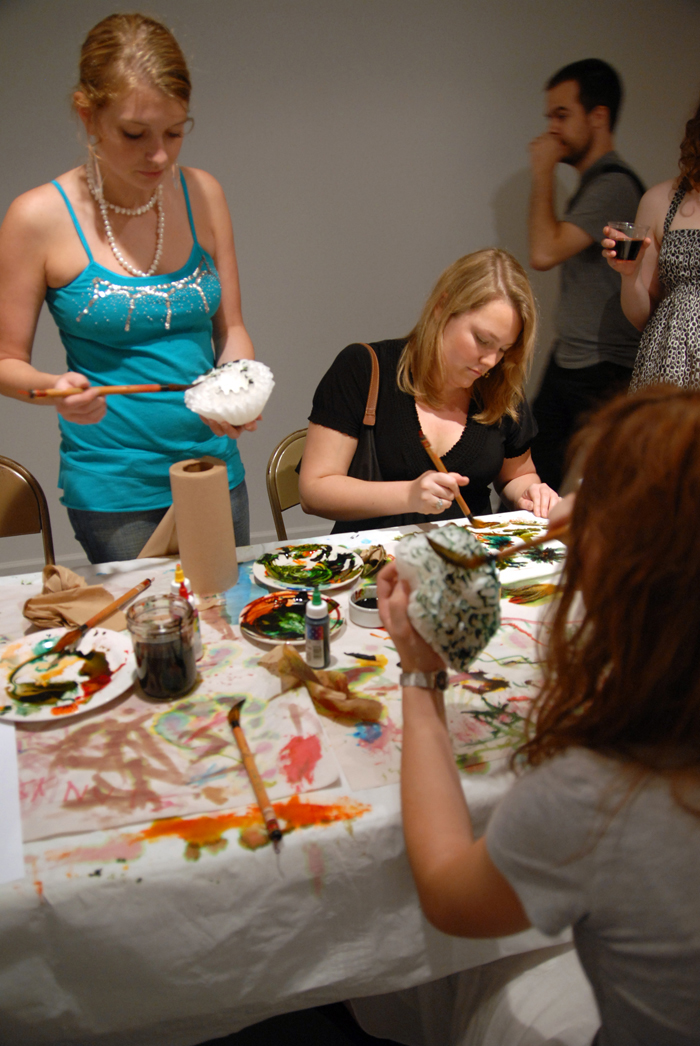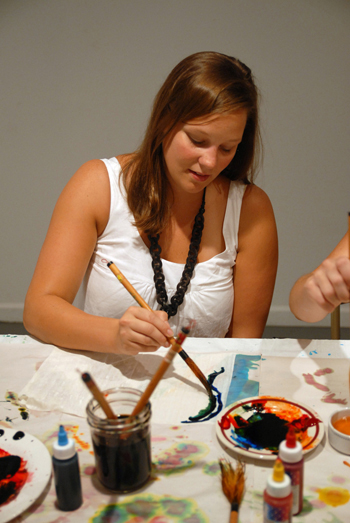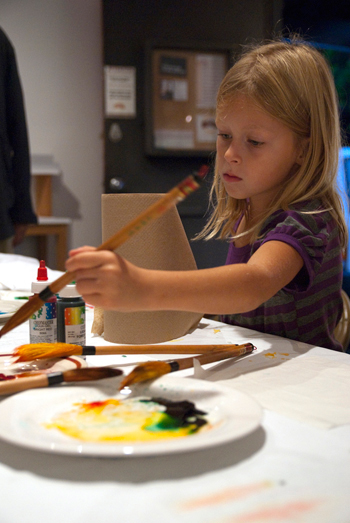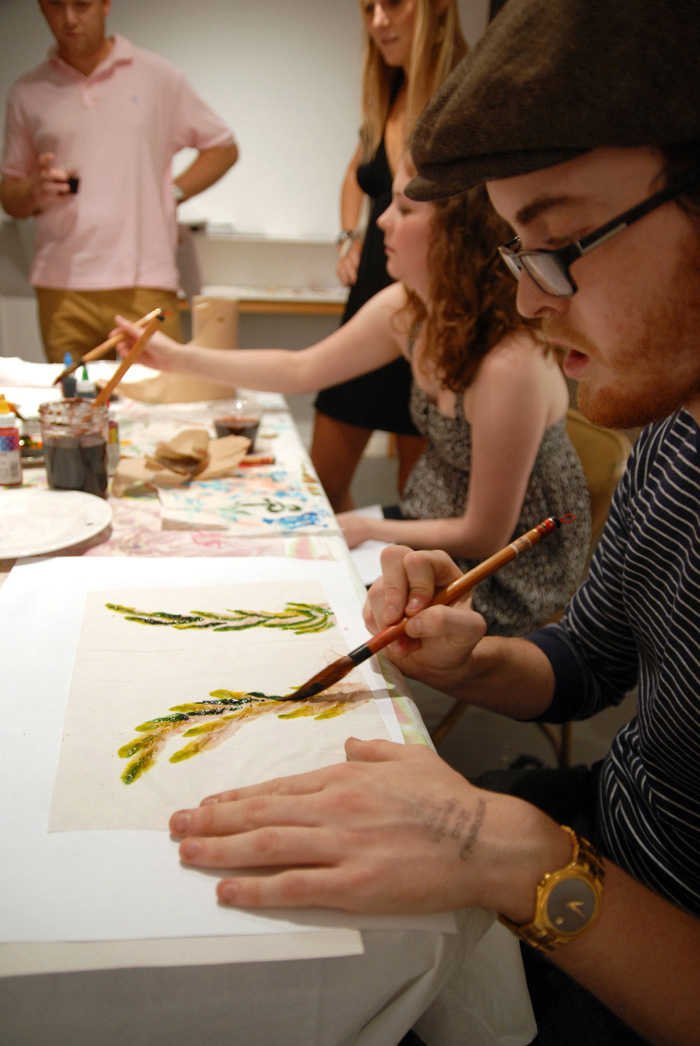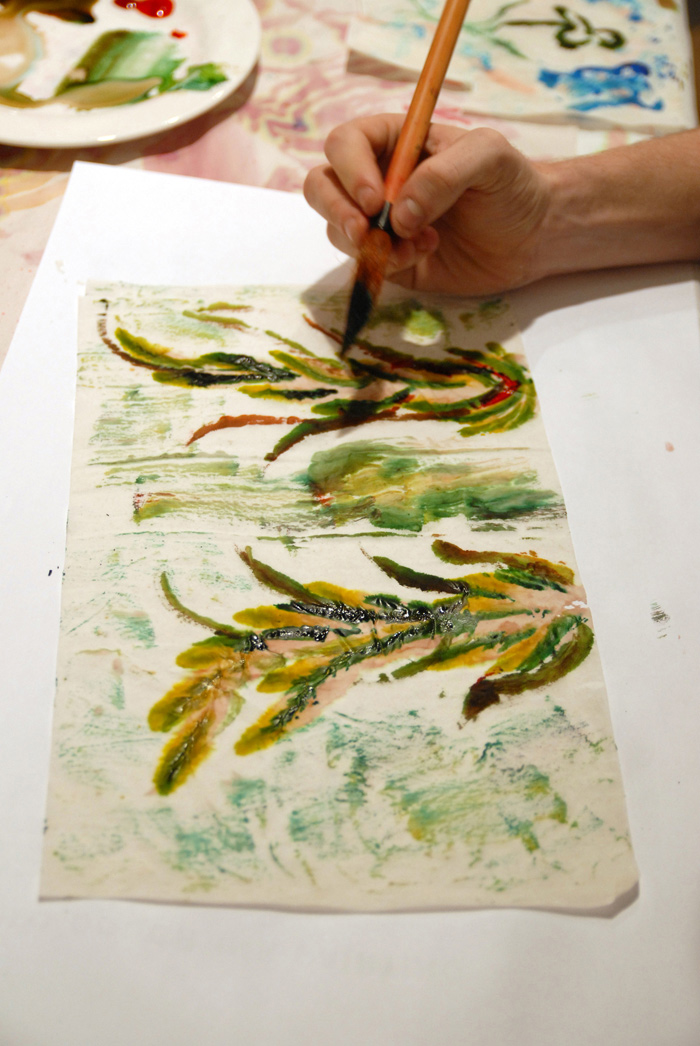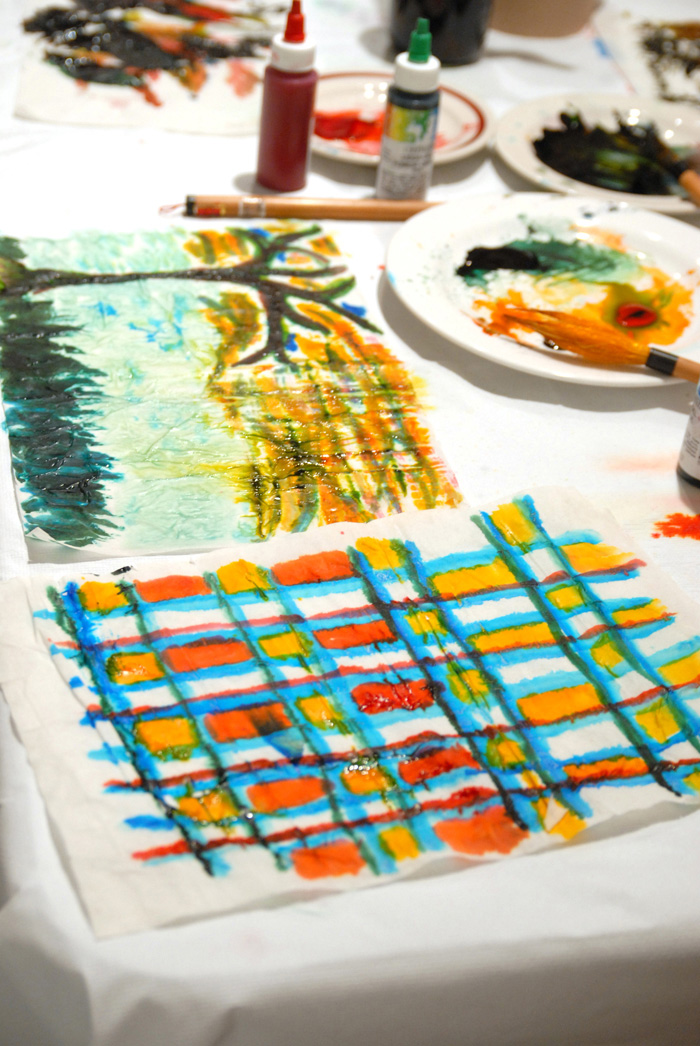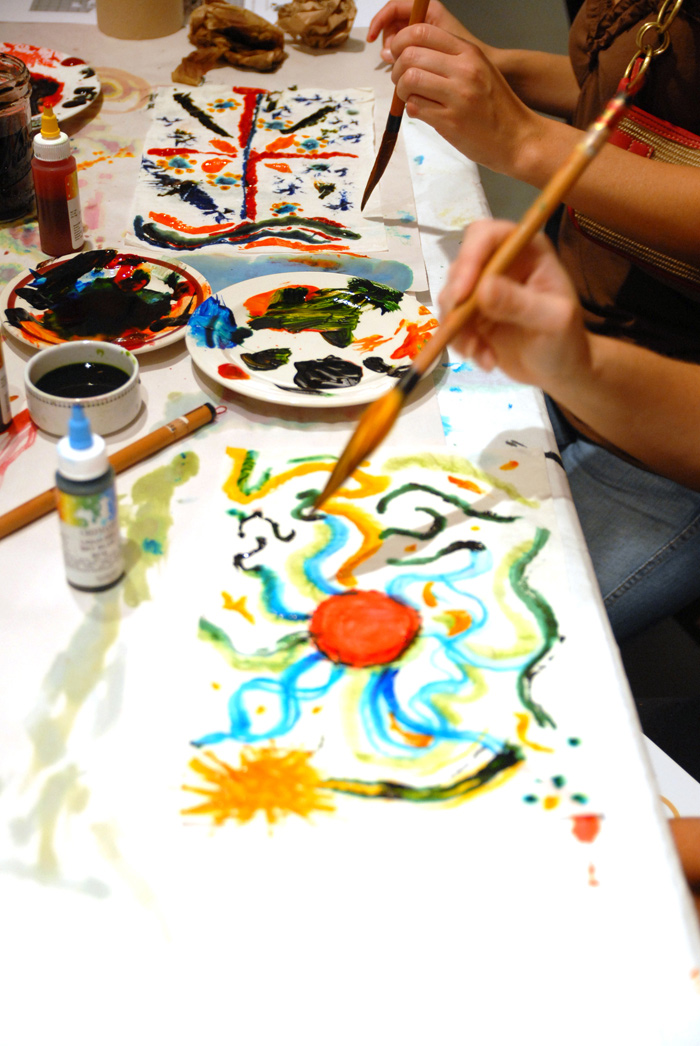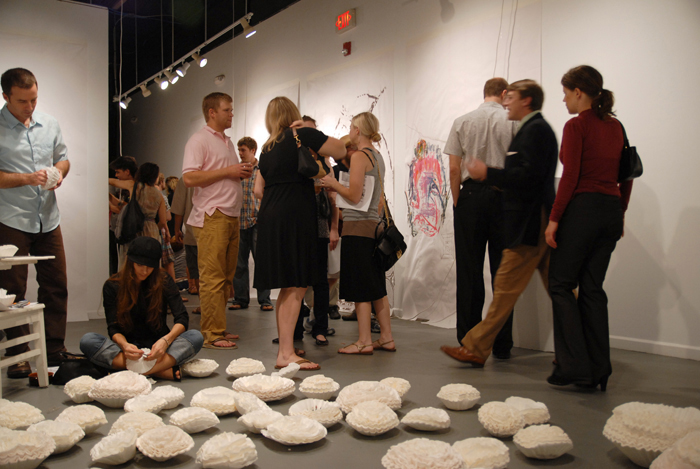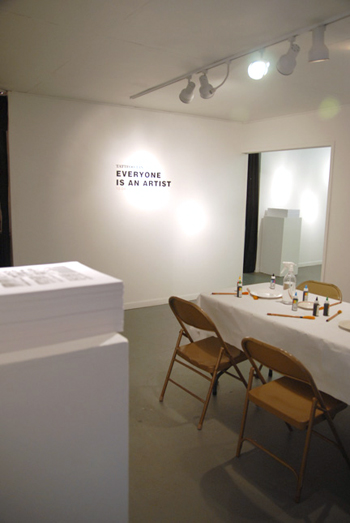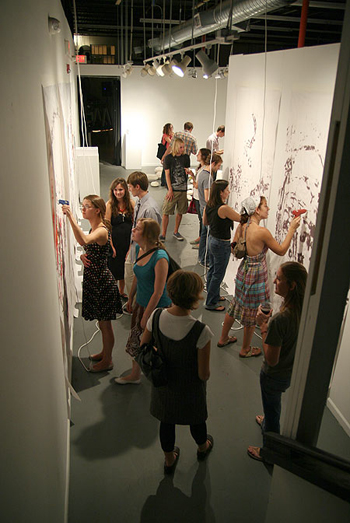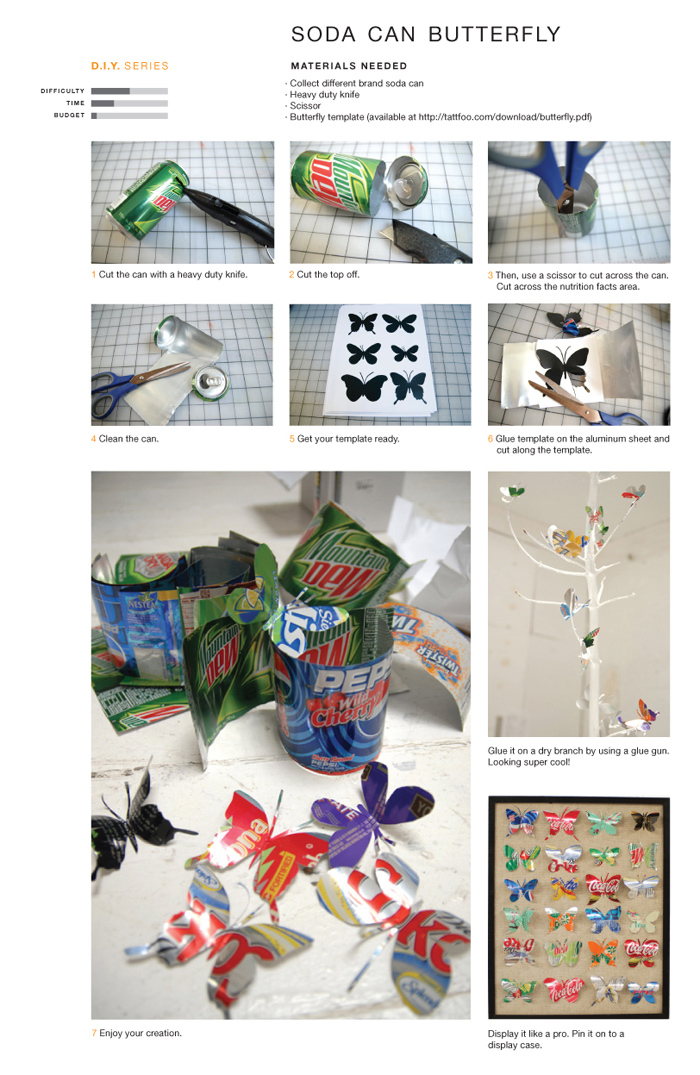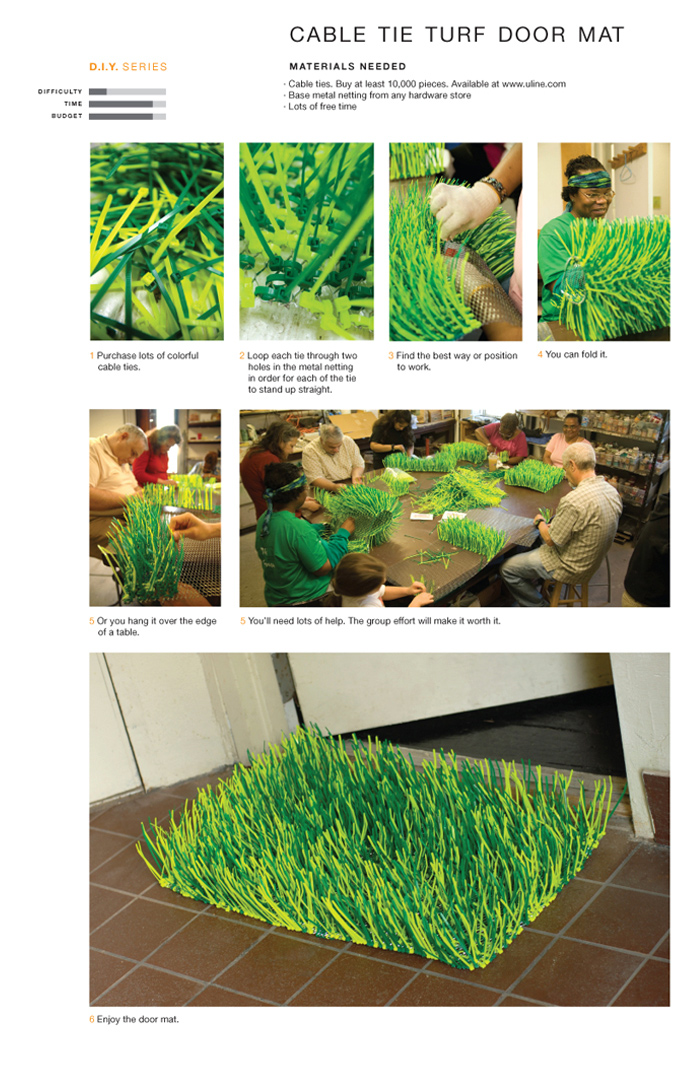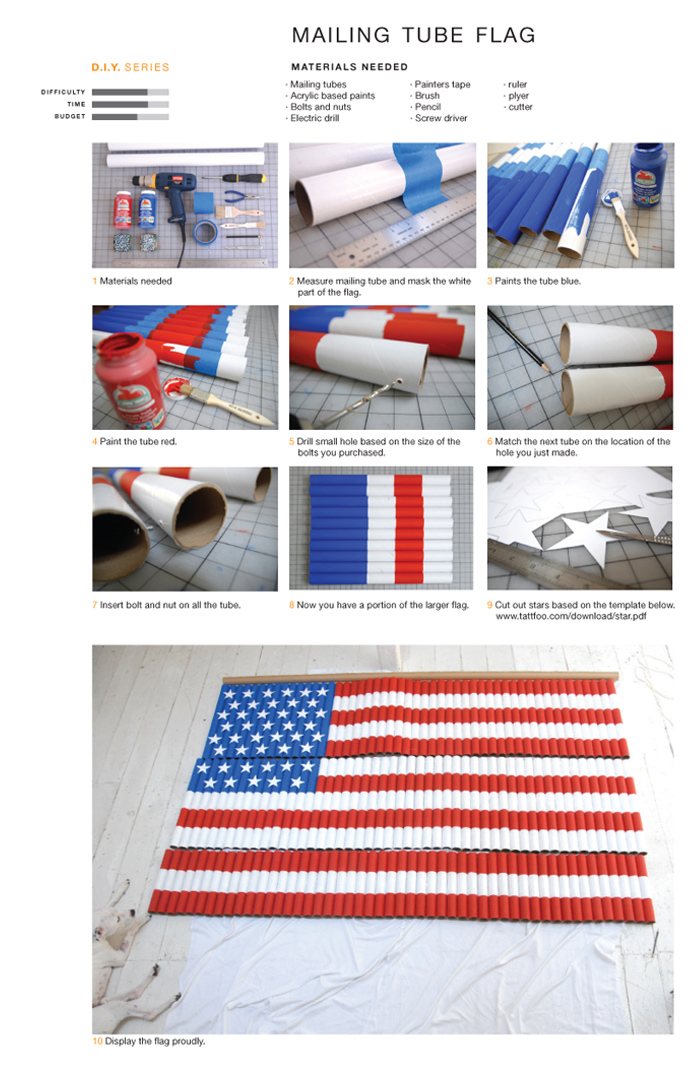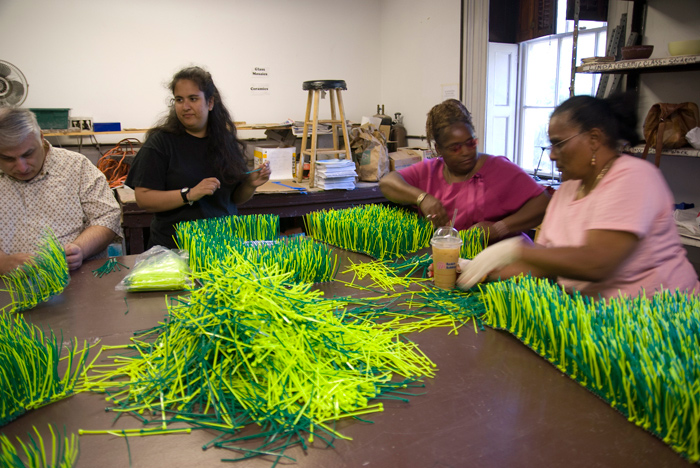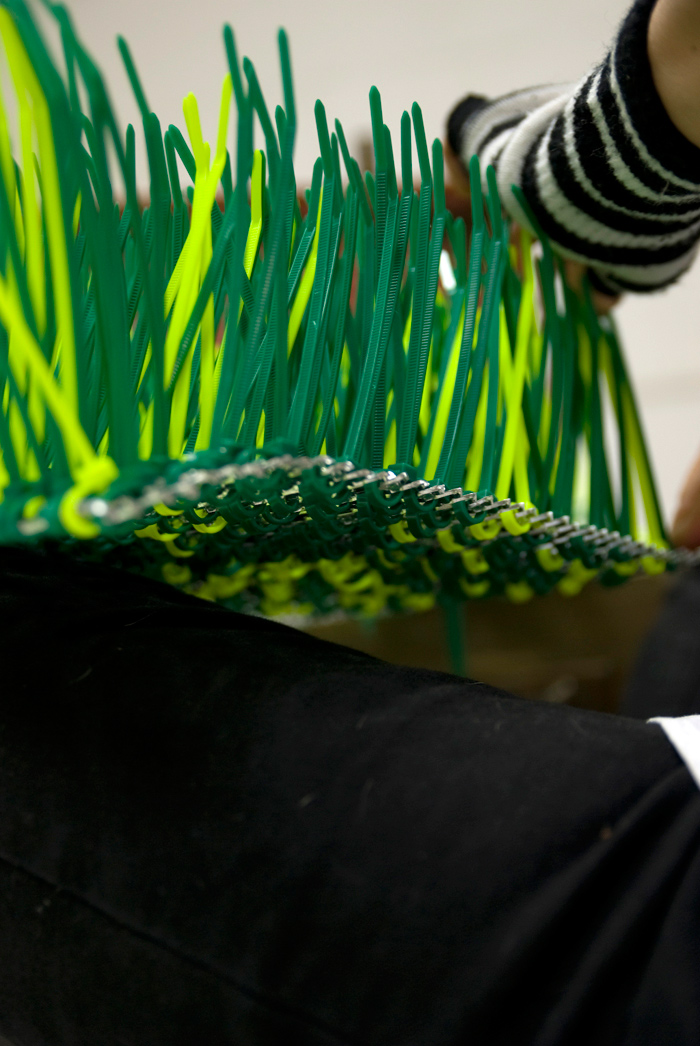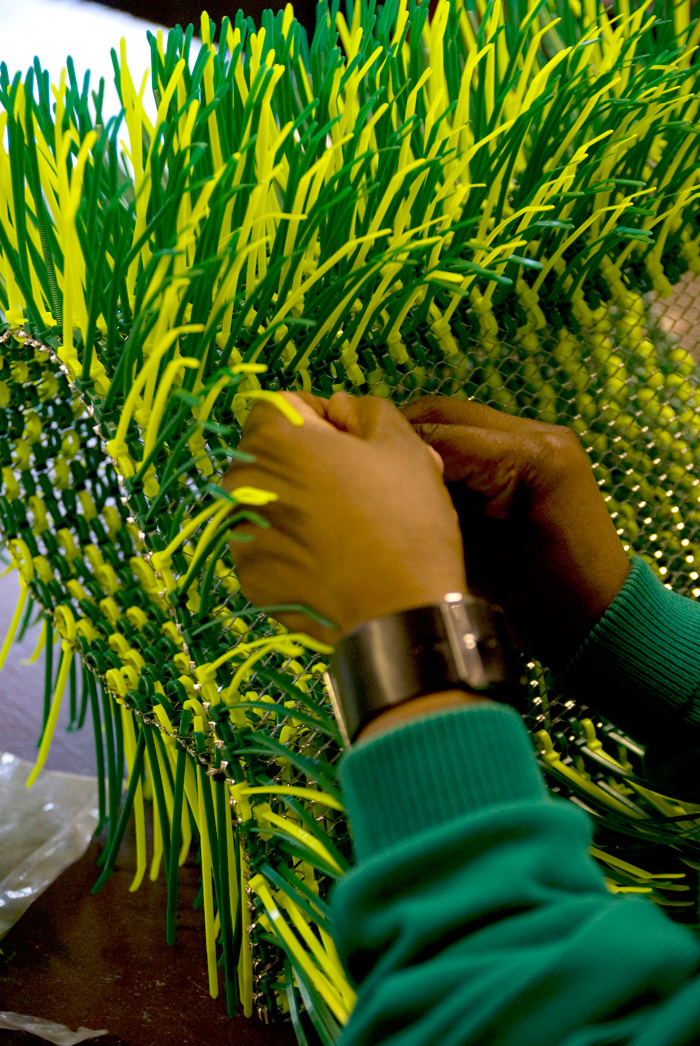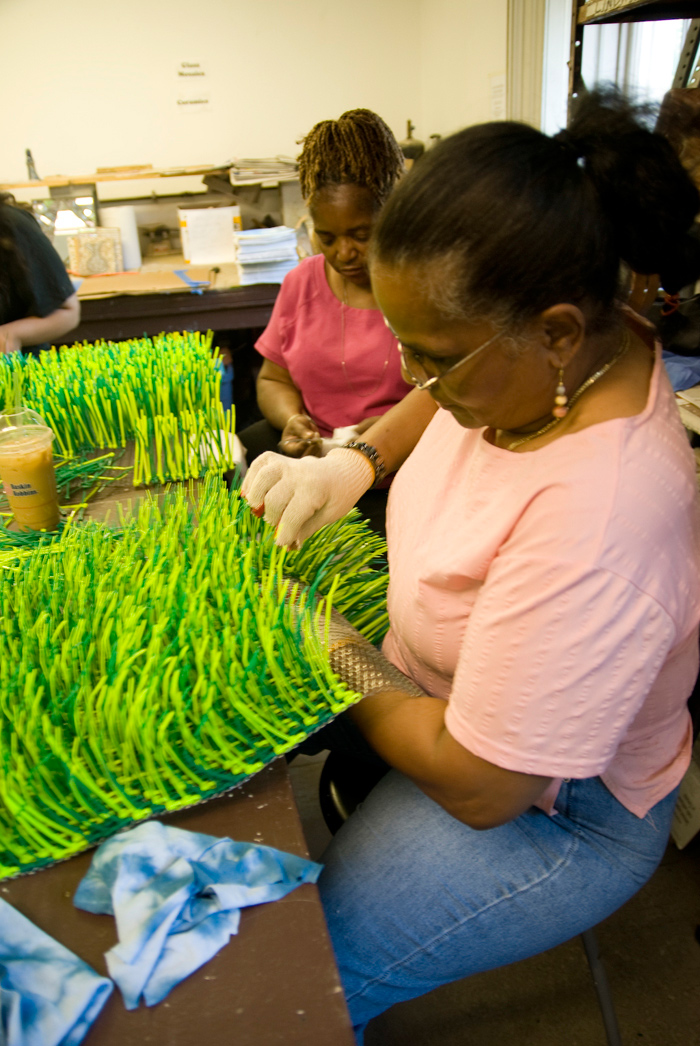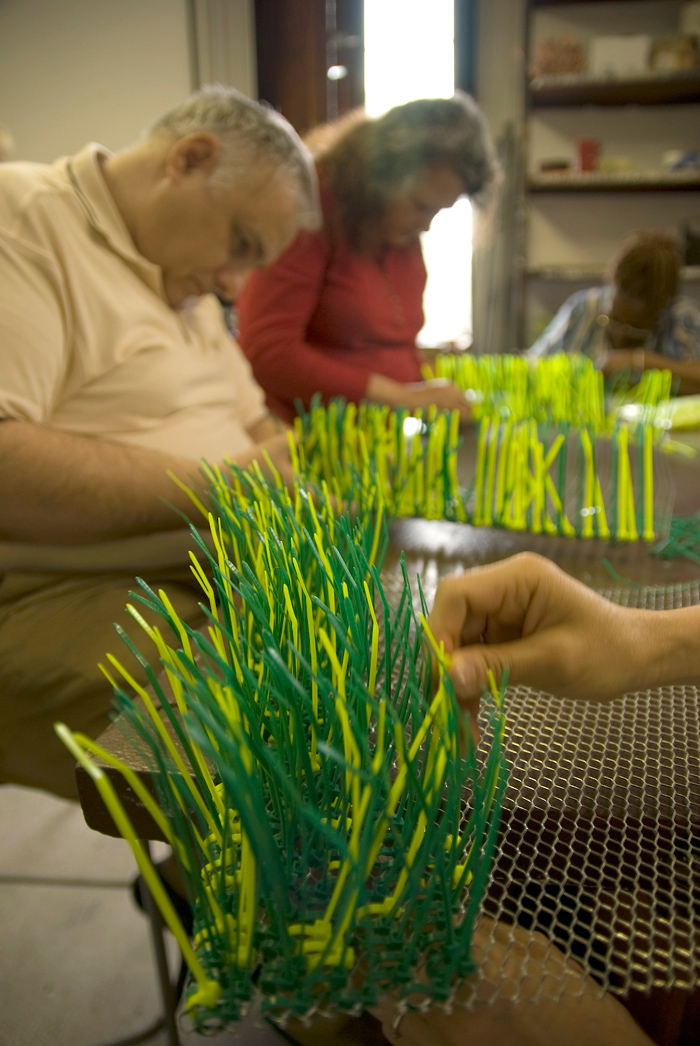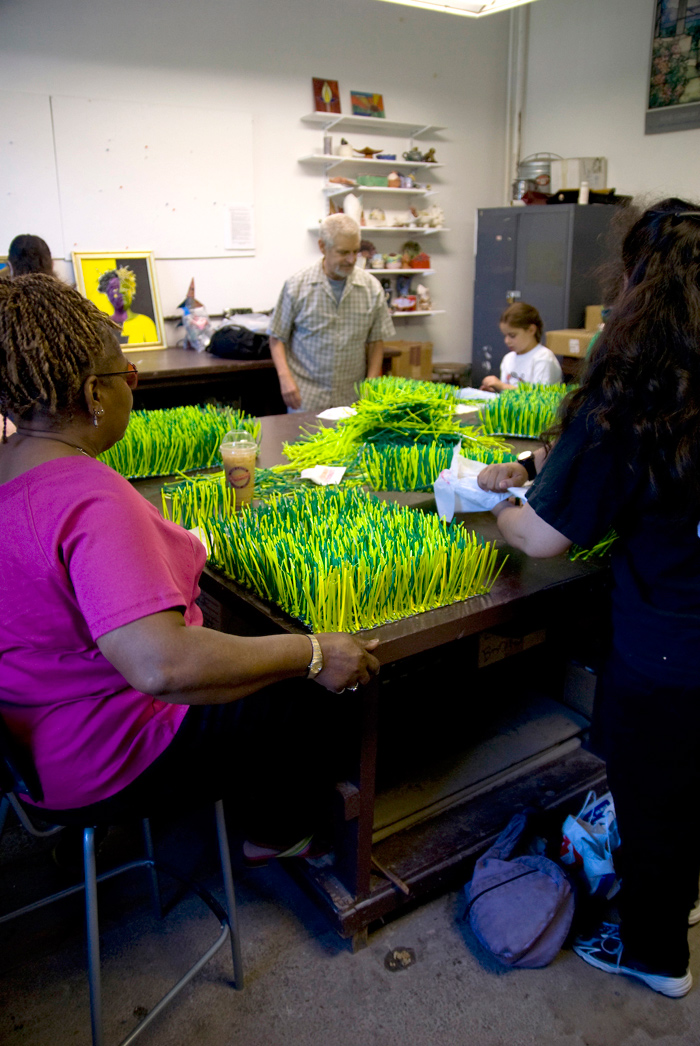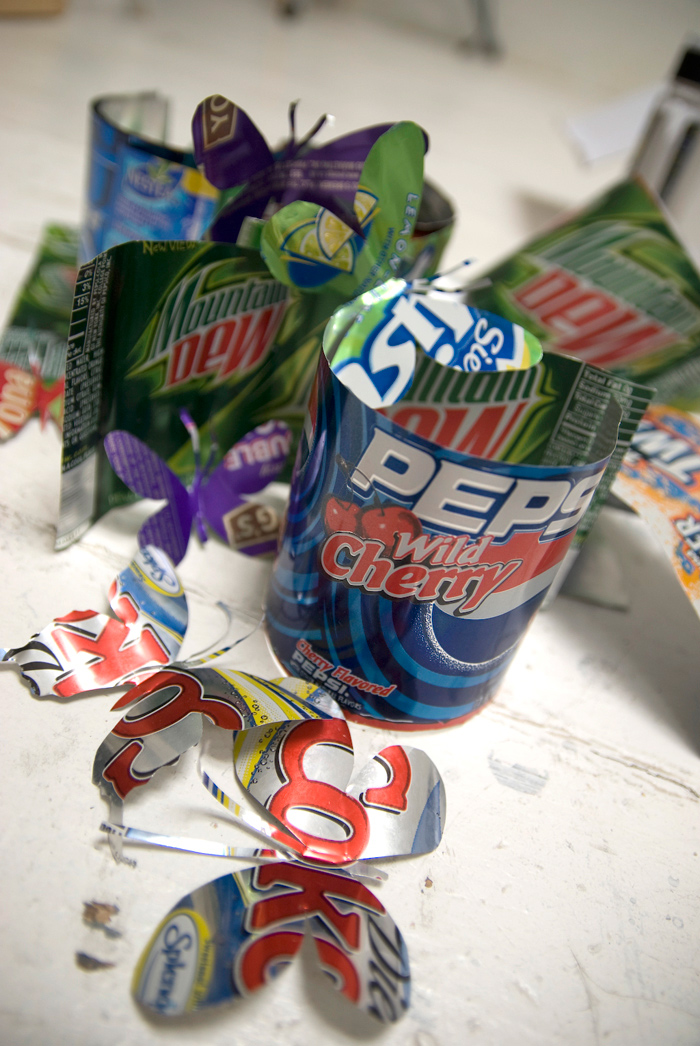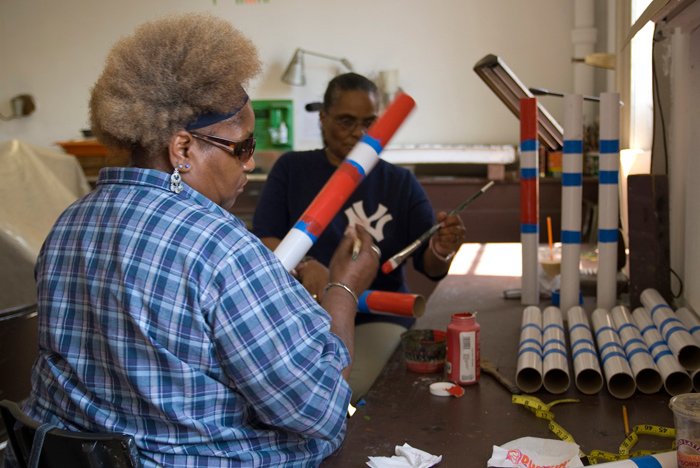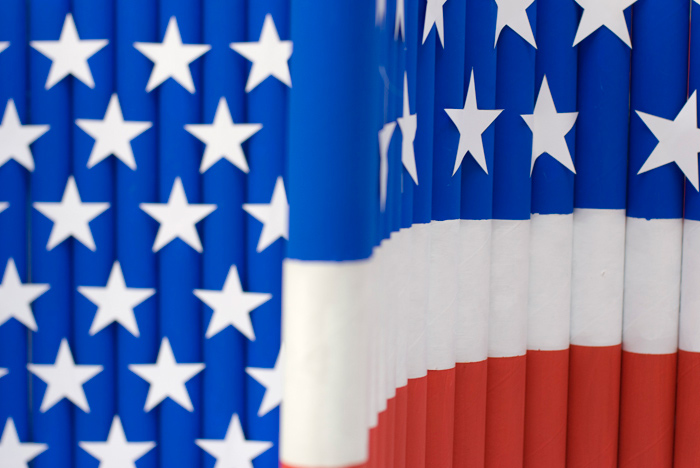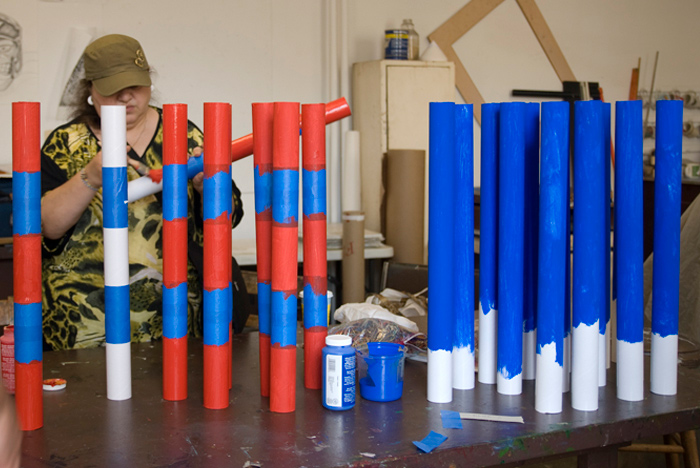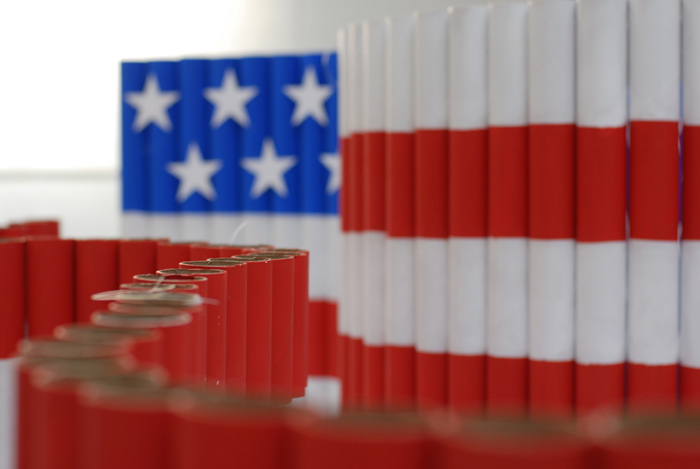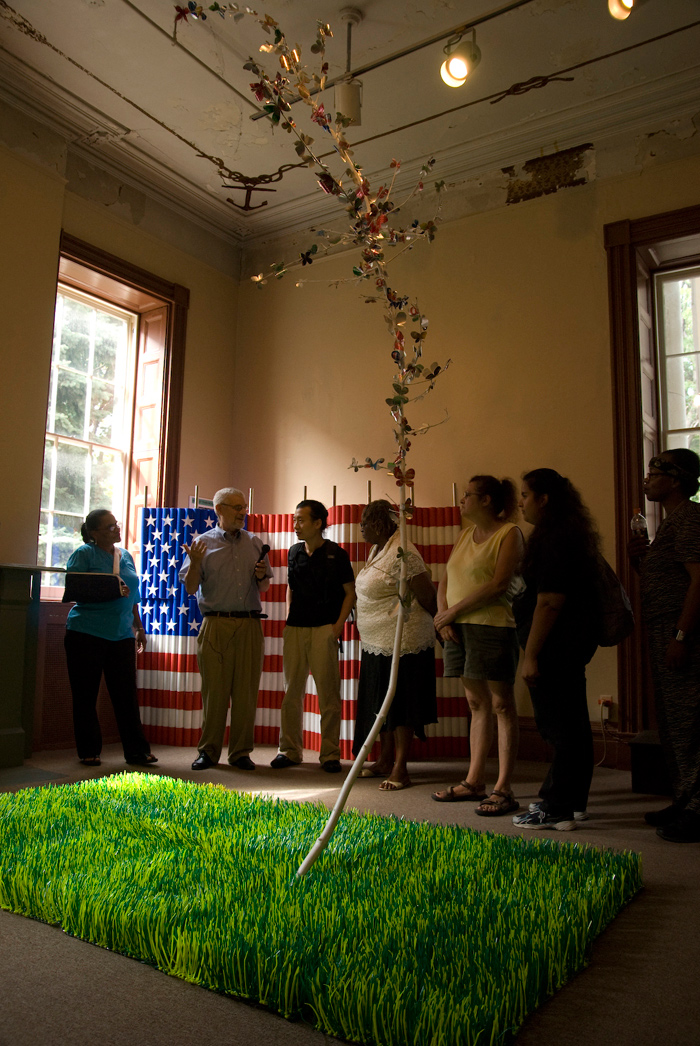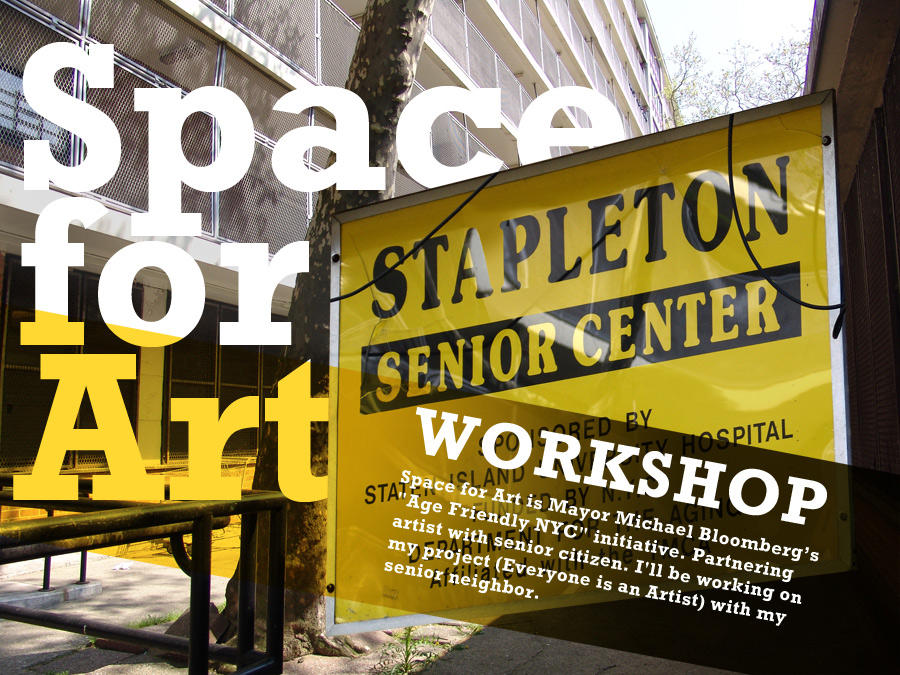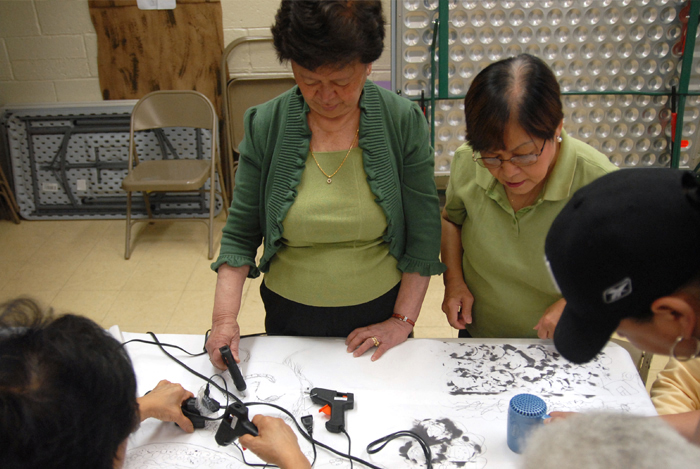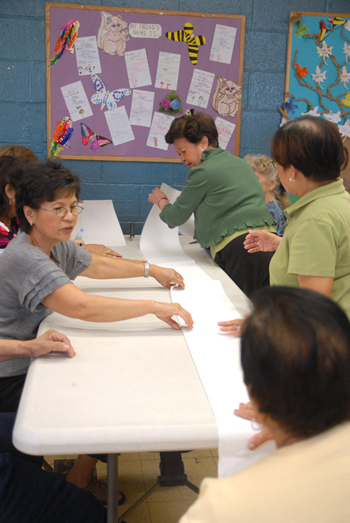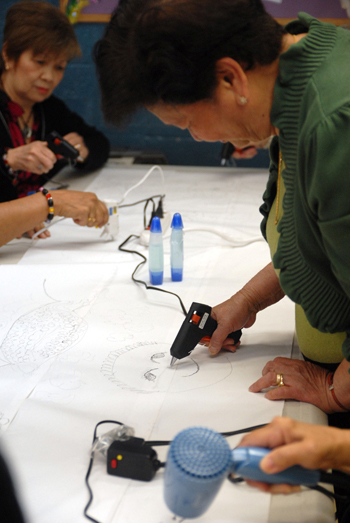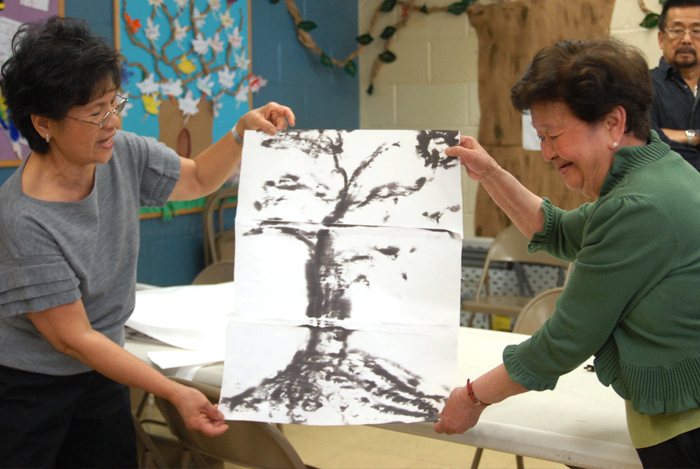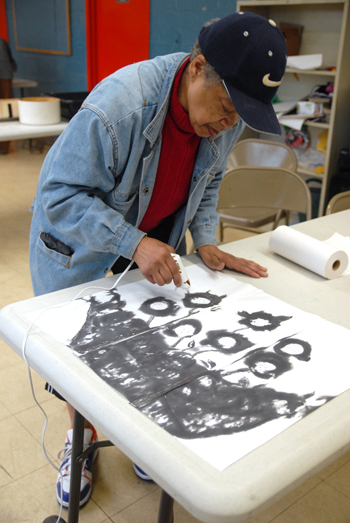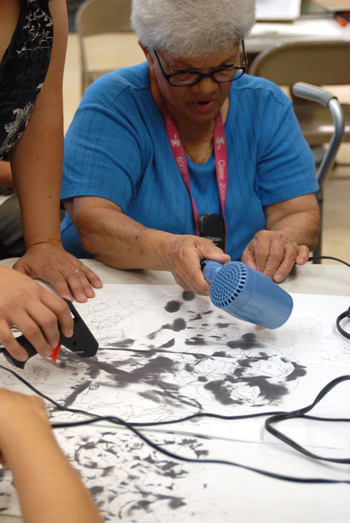Everyone Is an Artist is a printed poster that is distributed free to demystify the art-making process; it has step-by-step Usually the project is set up as a group effort, creating a synergy toward a single goal, achieving camaraderie and enriching life. The project is a catalyst to art-making at home with family and friends. The idea came about during my teaching
experience, from the need to create a teaching syllabus for my use and possibly the benefit of others too. Joseph Beuys’ famous slogan, “Everyone Is an Artist,” was not meant to suggest that all people should or could be creators of traditional artworks. Rather, he meant that we should not see creativity as the special realm of artists, but that everyone should apply creative thinking in their own areas of specialization. Beuys imagined that an expanded application of human creativity—and the broader definition of “art” that would follow—would result in something he called “social sculpture.” While the term encompassed many things for Beuys, it might broadly be defined as a conscious act of shaping, of bringing some aspect of the environment—whether the political system, the economy, or a classroom—from a chaotic state into a state of form, or structure. Social sculpture should be accomplished cooperatively, creatively, and across disciplines. |
|
The Arts of Recovery 2007
A study on aging adults in New York City identified the benefits of art in the lives of senior citizens. This new initiative seeks to connect artists and senior citizens in Senior Centers throughout New York City, as part of Mayor Michael Bloomberg’s "Age Friendly NYC" initiative. Each Senior Center is unique and offers access to different types of spaces, resources, and communities. Artists will work with the Senior Centers to arrange workspace and storage as well as to develop opportunities for informal interactions with seniors and/or on-site structured programs such as workshops, demonstrations, lectures and/or exhibits. Research found that aging visual artists have larger social networks, more intergenerational contacts, and higher life satisfaction scores than other older adults. As a result, the Department for the Aging is interested in creating opportunities for visual artists of all ages to regularly interact with senior center participants. The new arts programming will also encourage additional older New Yorkers to make use of the City's senior centers. NYC Department of Cultural Affairs Commissioner Kate D. Levin said, "This is an example of New York working at its very best: by leveraging currently unused spaces in the City's network of senior centers, we are able to provide much needed work space for our artists, while simultaneously providing new programming for older New Yorkers this will help ensure that
New York remains a creative community for people of all ages." My programming for the seniors will be at Stapleton Senior Center, 189 Gordon Street, Staten Island, NY 10304
|
